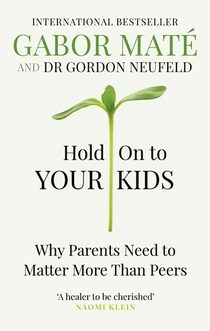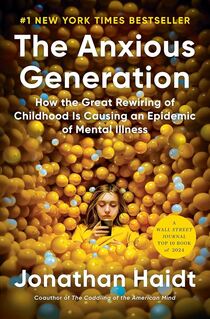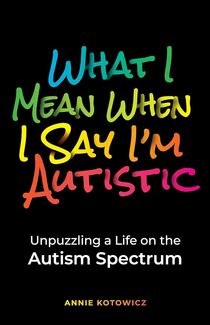August 2025
Loran Tang, recruiter and training coordinator of Children’s Ministry
3 Powerful Books That Will Change the Way You Parent
In February, I shared various websites and channels as tools you can use to do devotions with your child.
This month, I would like to recommend some excellent books that can help equip and enhance your parenting skills.
I understand there are many great parenting books available, but this time I’ve chosen just three, each focusing on a different aspect of parenting relevant to different stages of your child’s development.
Recommended Books:
- Hold On to Your Kids by Gordon Neufeld and Gabor Maté
- The Anxious Generation by Jonathan Haidt
- What I Mean When I Say I’m Autistic by Annie Kotowicz
Hold On to Your Kids — for parents of younger children

Why this book?
I selected this book because I’ve noticed a concerning parenting trend lately. Many parents encourage their children to turn to their peers at very early ages, believing this will foster independence and intelligence. However, the authors of this book argue that peers are not the best teachers of the virtues or independence skills you want your child to develop. When parental attention and presence are lacking, a void forms in your child’s life—one that can be easily filled by peers, the internet, or even strangers.
To me, connection with your child is the foundational element for all discipline and guidance. Sadly, many parents today believe that keeping their child close will slow their learning, which is not true.
Throughout the book, the authors use the term “collect” — as in, collect your kids after school or playtime. In other words, be intentionally present with them, so you won’t be replaced by others as their most significant influence.
In summary:
This book equips parents to raise resilient children who can better handle peer rejection or setbacks by building deep connections with their parents. When parents matter more than peers, they can effectively instill core family values.
Key Concepts:
- Attachment is above all
Children are biologically wired to seek attachment—emotional closeness, security, and guidance—from adults. However, in modern society, kids increasingly turn to peers instead of parents for this attachment. - Peer Orientation: A Dangerous Shift
When children attach primarily to peers (peer orientation), it undermines parental influence. This can lead to defiance, lack of respect for authority, bullying, social anxiety, early sexualization, and addiction to social validation (e.g., through social media). - The Role of Parents: Reclaiming Connection
Parents must actively reclaim their role as primary attachment figures by fostering emotional closeness, being physically and emotionally available, and earning their child’s trust. - Discipline Through Connection, Not Punishment
Discipline should be based on a strong relationship, not fear or control. The authors advocate for connection-based discipline. - Counteracting Cultural Forces
Modern life—busy parents, technology, schools, and media—often pulls kids away from adults. Parents need to be proactive in maintaining their connection, even as children grow older.
The Anxious Generation — for parents of preteens and teenagers

Why this book?
I chose this book because many parents are unaware of the serious negative impacts early exposure to social media platforms like Instagram, Snapchat, and TikTok can have on their children. If you’ve ever wondered about the rising rates of suicide, bullying, depression, and anxiety among kids, this book offers clear explanations.
Jonathan Haidt explains how smartphones and social media have rewired children’s brains and contributed to increased anxiety and depression starting in the 2010s. As a social psychologist, he also offers practical solutions for parents and schools to address this mental health epidemic. I hope this book raises awareness among parents and helps protect children from the unregulated, often harmful social media environment, allowing them to grow up in a healthier, play-based environment.
Key Concepts:
- The Decline of Play-Based Childhood
Since the 1980s, children have had fewer opportunities for independent play and exploration due to increased parental fears—despite actual dangers decreasing. The loss of free play has limited children’s ability to develop resilience. - The Rise of Phone-Based Childhood
With smartphones and social media in the late 2000s, adolescents began spending more time online, reducing face-to-face interactions, disrupting sleep, and increasing exposure to cyberbullying. Haidt identifies four major harms: social deprivation, sleep deprivation, attention fragmentation, and addiction. - The Great Rewiring of Childhood
This combination of reduced real-world play and increased digital engagement has fundamentally altered children’s social and neurological development, contributing to rising youth mental health issues. - Proposed Solutions
Haidt offers policy recommendations, educational reforms, and parental strategies to combat these challenges through collective efforts.
What I Mean When I Say I’m Autistic — for those supporting neurodiverse children

Why this book?
I’m sure I’m not alone in feeling overwhelmed by the rising diagnoses of ADHD, autism, and related conditions today. The author, Annie Kotowicz, was deeply grateful to receive her autism diagnosis because it explained why she felt different from her schoolmates and colleagues. What I love about this book is how it celebrates the beauty of neurodiversity and helps readers better understand the thoughts and behaviors of neurodiverse individuals—regardless of diagnosis.
If you’re a parent of neurodiverse children, or a worker or volunteer in schools or children’s ministries, this book will help you understand children whose minds are wired differently, so you can communicate with them more comfortably and confidently.
Key Concepts:
- Sensory Sensitivities:
Kotowicz describes heightened sensory experiences—both pleasurable and overwhelming—helping us understand the discomfort autistic children may face. - Stimming and Coping Mechanisms:
The book explains self-regulatory behaviors like stimming, which help manage sensory overload and emotional stress, providing practical methods to calm autistic or ADHD children. - Social Interactions and Masking:
Kotowicz reflects on the challenges autistic individuals face socializing in a neurotypical world, including the effort it takes to mask autistic traits in order to fit in. - Identity and Self-Acceptance:
A central theme is embracing one’s autistic identity, moving from confusion and self-doubt toward self-acceptance and pride.
I hope these resources are helpful to you. Please feel free to reach out—we are always open to communication and discussion.
|
Connected to Cheryl Li: cheryl.li@bacfamily.org Connected to Loran Tang: loran.tang@bacfamily.org |
|
|
|
